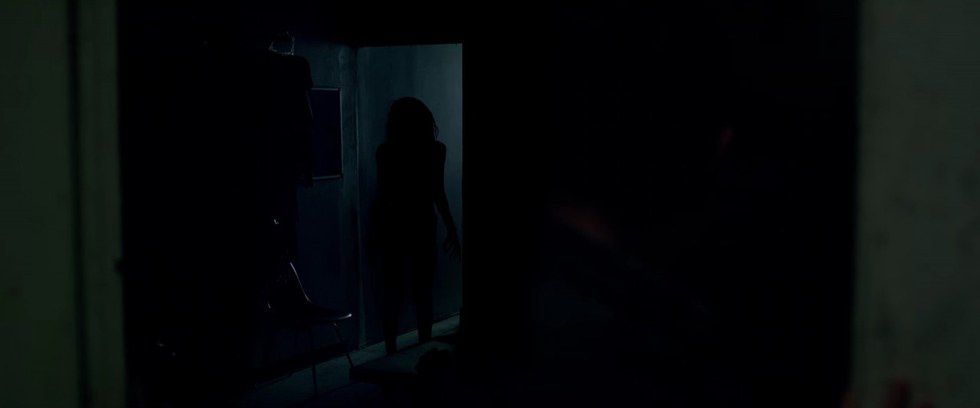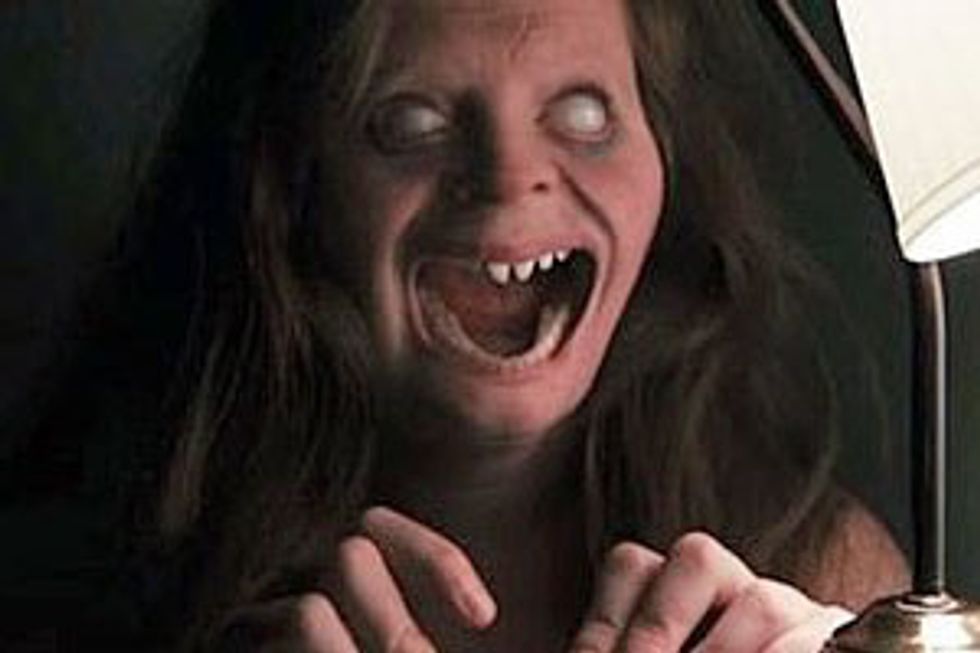"Lights Out" is both a horror short film and a full-length movie directed by David F. Sandberg and produced by James Wan. Both the short and the feature film deliver by demonstrating that less is more, especially in horror.
Those familiar with the horror genre know that the true scariest films are not the overly bloody and gratuitous; they are the subtle, the simple, and the terrifying that leave us wanting more. The demon, a monstrous shadowy figure named Diana, is Lovecraftian in design -- "Lovecraftian" signifying fear of the unknown. The audience is never allowed to see Diana up close. Her appearance in the foreground is terrifying and all too real. Except for her stance, she could be any person standing in the dark.
Diana's design is taken straight from the original and uses practical effects rather than CGI. CGI effects can sometimes come off as cheesy and contrast too greatly with non-CGI actors, taking the audience out of the scene, like the Crooked Man scene in the "Conjuring 2," for example. There is a hidden attribution to the demon's original design from the short film in the opening scene. The original design, while creepy, was better left as an Easter egg because the scarcely-seen demon is the much scarier image.
The film's concept is mostly just an expanded version of the short film. Diana's backstory is interesting: her reason for appearing in the shadows is explained as an extreme sensitivity to light (before she was killed in an experimental light treatment for said disease), but her reasons for being evil are not. This gives her nature some context while still keeping some mystery. Most importantly, not explaining her reasons for being evil keeps the plot from becoming unwieldy.
Likewise, the characters, while not as memorable as some of the classics, do have enough personality to carry the story along, but without any forced sentimentality. The relationship between the main female lead, Becca, and her sort-of boyfriend Bret provides comic relief.
The ending is dark, but a logical way to defeat Diana. Some may say that trying to keep paranormal events logical isn't necessary, but I think that an unrealistic conclusion to a story can leave a sour aftertaste for the audience. Not every story involving ghosts and demons will have a happy ending. While it's not impossible to suspend disbelief for the sake of a film, realism can help keep the audience tethered to this temporary reality.
The film is often credited as "Jame's Wan's Lights Out," even though the film was produced by him, not directed by him. While not directed by Wan himself, the style of"Lights Out" is definitely influenced by Wan. Wan's films are known for being extremely tension-heavy and have plenty of jump scares. However, there is enough subtlety in the film to balance out the jump scares.
The past two years have given us much to contemplate in the horror genre. Many horror fans check out the new films with a sort of cynical curiosity and readiness for disappointment; we have been spoiled by the classics, and hold the new contenders to high standards. When a film like "Lights Out" manages to recognize and apply the elements that made its predecessor so great, it certainly stands out from the rest.























